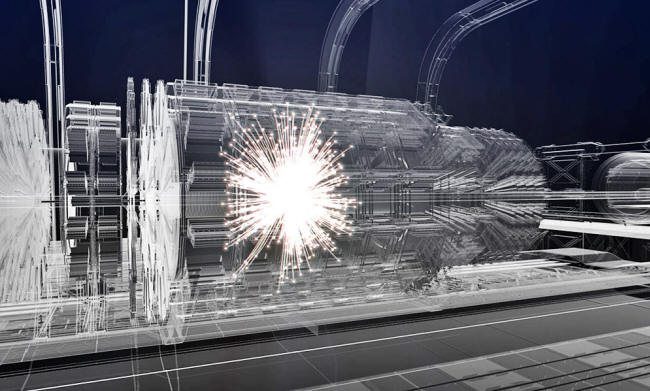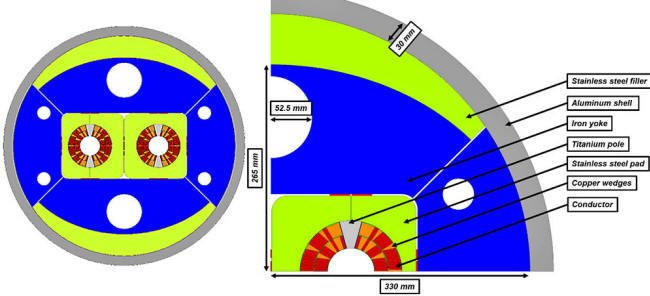|
Illustration: CERN
for CERN's Future Circular Collider, scientists must invent a new class of magnets...
Experiments by this world-renowned particle accelerator have provided critical data supporting the Standard Model, a theory describing how particles in our universe behave and interact.
But physicists are keen to know
whether the model holds up for particles at even higher energies.
CERN, the research organization
behind the LHC, hopes to explore these mysteries with its proposed
next-generation facility, the Future Circular Collider (FCC).
The facility would come
with an estimated price tag between €9 billion (US $10.2 billion)
and €21 billion, and part of the facility could open as soon as
2040.
Whereas the magnetic
system at the LHC can achieve strengths of 8.3
teslas, the FCC
system would be able to achieve 16 T.
More than 4,500 magnets will be required for the FCC, and those magnets must rely on new designs and materials.
The magnets currently used in the LHC are made of niobium titanium (NbTi) - but for the FCC, scientists will switch to the more powerful superconducting material niobium tin (Nb3Sn).
However, this material is sensitive to the tiniest deformation.
This is problematic
considering the
extreme changes the material will undergo, which
could degrade its superconducting properties. Therefore, scientists
need new designs to minimize stress on these systems.
A D2 magnet is the second-to-last one along the circular track of a particle collider, positioned right before the particles smash into each other.
Its main function is to separate and recombine the particles of the two beams.
involves encasing the system - which includes coils [red] and iron yoke [blue] - in an aluminum shell [gray]. Special bladders are temporarily placed in the system and inflated to pre-stress it. Then, the aluminum shell helps to
pre-stress the system further as it cools.
For lower magnetic
fields, such as those at the LHC, this cross-talk can be resolved by
including a component known as an iron yoke between the two
apertures. But an iron yoke is not sufficient to stop cross-talk at
higher magnetic field strengths.
A similar design will be used first in the LHC, as part of an upgrade project called High Luminosity LHC (HL-LHC) that will be completed in 2026.
"Personally, I think Nb 3Sn is not ideal - it's too expensive. But if you want to have something now, this is the only choice." Yifang Wang, Chinese Academy of Sciences
The upgrade will allow for better steering of beams, increasing the total number of collisions that occur by a factor of 10.
The magnetic fields produced by this new D2 magnet will be able to reach 4.3 T, while the most powerful magnets of the HL-LHC may reach 10 to 12 T.
Recently, the D2 magnet
was shipped to CERN and Farinon's team will begin testing it there
in February.
While many physicists are excited about the potential of the FCC, some scientists have argued that the money it will cost to build the facility could be better spent on health or global warming initiatives.
The decision on which
components of the FCC proposal to fund - or whether to fund it at
all - will be made by the CERN Council, shortly after the next
European Strategy is finalized in the first half of 2020.
While Wang supports the development of the electron-electron component of the FCC design, he is less convinced that the part of the proposal for a proton-proton collider is worth the high price tag.
He says,
His team at the Institute of High Energy Physics is exploring the prospect of a Super proton-proton Collider (SppC) - but its magnetic field would be made from cables comprising an iron-based high-temperature superconductor.
|



